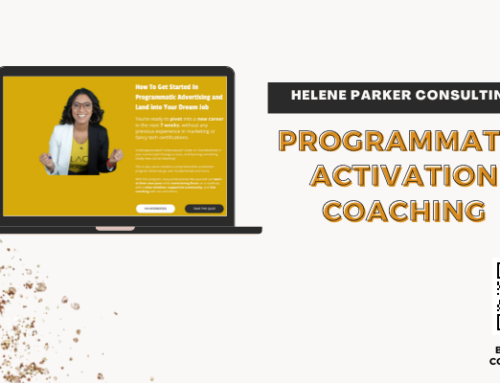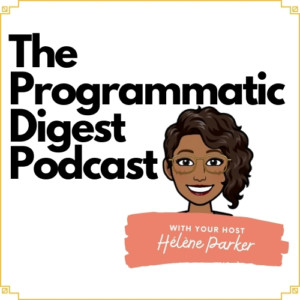How Close Is The Industry To A Cookieless Future
Announcement Of The week:
I will be attending Progio Las Vegas NEXT WEEK where I will be presenting on The New Fundamentals Of Programmatic Activation. If you are going to attend, make sure to message me on LinkedIn or email me to set up some time to say hi 😬
Register today and use code HPC200 to save $200 off your registration. https://adexchanger.online/iolv22 #PROGIOLV
🔥🔥🔥🔥 Hot Jobs:
My friends’ at Adquick are looking for: Programmatic Account Executive and Programmatic Opps Manager:
Remote, no prior experience required, just have to be willing to learn, and definite go getters! Tell them Helene send you 😬🦄
Noteworthy News of the Week:
I came across Chris Kelly’s article in Marketing Dive on “How prepared is the ad industry for a cookieless future?”
I giggled first, and then my mood shifted a bit, but here’s a recap:
- The Interactive Advertising Bureau and other industry trade groups have warned that $10 billion of annual sell-side revenue is at risk if the ad industry doesn’t prepare for a cookieless future. Some advertisers have already begun to shift tactics and budgets away from third-party cookies and towards first-party data.
- While knowledge gaps increasing, several studies show that brands, agencies, and publishers recognize that changes to how they target, measure, and attribute must change, sooner than later. The real work will be figuring out the right formula for cookieless solutions.
- Google’s Privacy Sandbox is likely to include proposals like Topics, which would use a user’s browser to determine a handful of topics that correspond to the user’s top interests. But the inner workings of Topics are often too technical for ad industry figures.
- First-party data is expected to be a major part of the cookieless future, and many companies are testing cohort- and contextual-based data for targeting and measurement. The shift will lead to more algorithmic, data-driven models for attribution and measurement.
- First-party data is not a panacea that can replace third-party cookies. It may prove to have less or different value to other companies in the advertising supply chain due to the way individual publishers define their audiences.
- The changing data privacy landscape will impact targeting, measurement, and attribution, as well as the biddable inventory across open web, programmatic and social environments. Clients will shift towards private marketplace deals and direct buys, including closed ecosystems including walled gardens, and retail media networks.
- The cookieless landscape is possible, but not easy, especially for CMOs more comfortable with the higher-level picture. One or two people within your organization should translate technical conversations.
Actionable Insight:
This is a great reminder of the current state of our industry when it comes to our journey toward third-party cookie deprecation. Chris does an amazing job explaining where we are, what we understand, and how cloudy the future still looks ahead.
What can you do with this information?
- How knowledgeable are you on the current state of the industry? It could be as simple as attending privacy-first webinars or requesting training meetings with your DSP team or AdTech partner, or reading articles update. This is becoming more and more important, and it should be prioritize.
- Evaluate different solutions including holding current partners accountable: Are you fully set up to mine first-party data? Are you fully set up to measure all touchpoints of your customer journey?
- What other tactics have you considered or tested so far? We’ve talked previously about looking at this as a mix of different solutions and moving away from looking for a 1-1 solution to cookiepocalypse. The key thing is to get started on implementing new tactics to support your overall strategy, including audience precision. Contextual tactic should be part of the many tactics you looking into.
- On the Programmatic Digest podcast, I had the pleasure of interviewing Kevin Bauer from the Prohaska Consulting, and here”s what he had to say:
-
1. Pick 2-3 data points that are important and will move the needle for you
-
2. Make sure those data points can be attributed to individual consumers or clients, not channels or cookies,
-
3. Then, make sure you’re measuring real people you’re looking for while seeing your dollars well-spent or not.
-
I strongly recommend listening to episode 83 Creating Sanity For Marketers In The Cookiepocalypse as he explained and really give major tips on how to focus on what’s important and how have clarity in the midst of it all.



